MEDIUM
JEE Main/Advance
IMPORTANT
Earn 100
sources of current with different emf’s are connected as shown in figure. The emf’s of the sources are proportional to their internal resistances, where is an assigned constant. The connecting wire resistance is negligible. The potential difference between pointsdividing the circuit in and links.
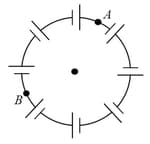

(a)
(b)
(c)
(d)
50% studentsanswered this correctly

Important Questions on Current Electricity
EASY
JEE Main/Advance
IMPORTANT
The reading of voltmeter is
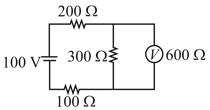
EASY
JEE Main/Advance
IMPORTANT
MEDIUM
JEE Main/Advance
IMPORTANT
The current through the ammeter shown in figure is If each of the resistor is replaced by resistor, the current in circuit will become nearly :
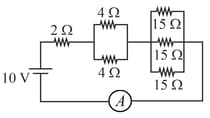
EASY
JEE Main/Advance
IMPORTANT
The ammeter shown in figure consists of acoil connected in parallel to a shunt. Find the reading of the ammeter.
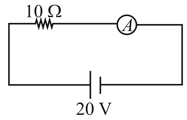
MEDIUM
JEE Main/Advance
IMPORTANT
MEDIUM
JEE Main/Advance
IMPORTANT
EASY
JEE Main/Advance
IMPORTANT
The meter-bridge wire shown in figure is long. When , no deflection occurs in the galvanometer. Find.
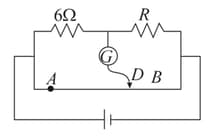
MEDIUM
JEE Main/Advance
IMPORTANT
